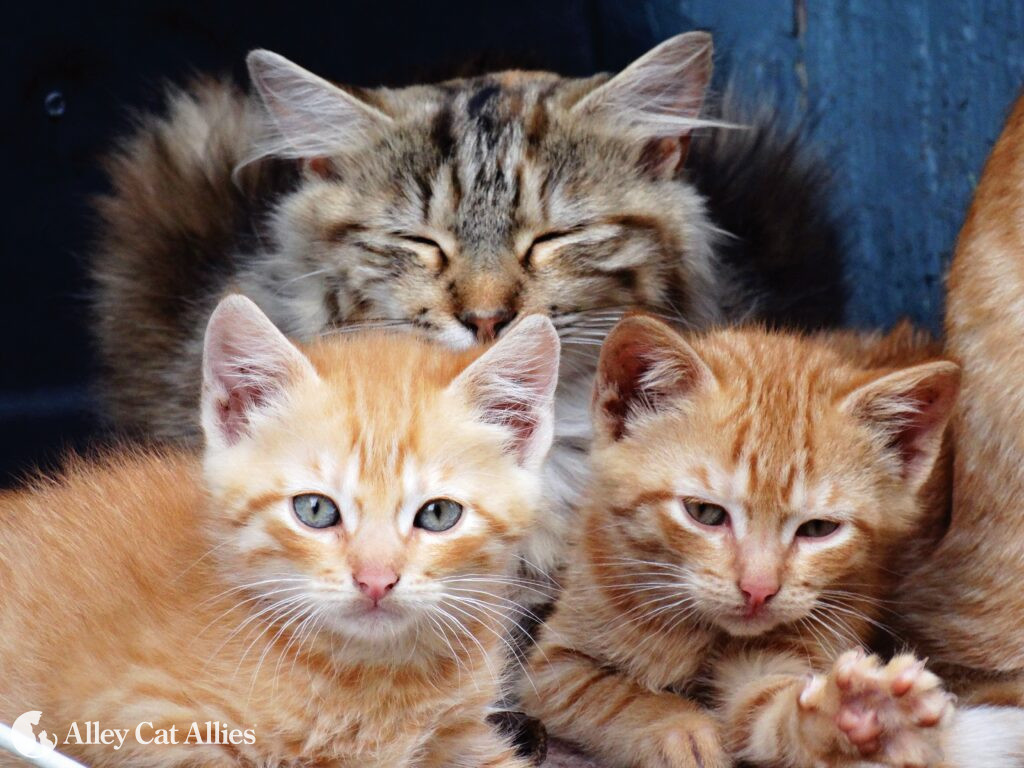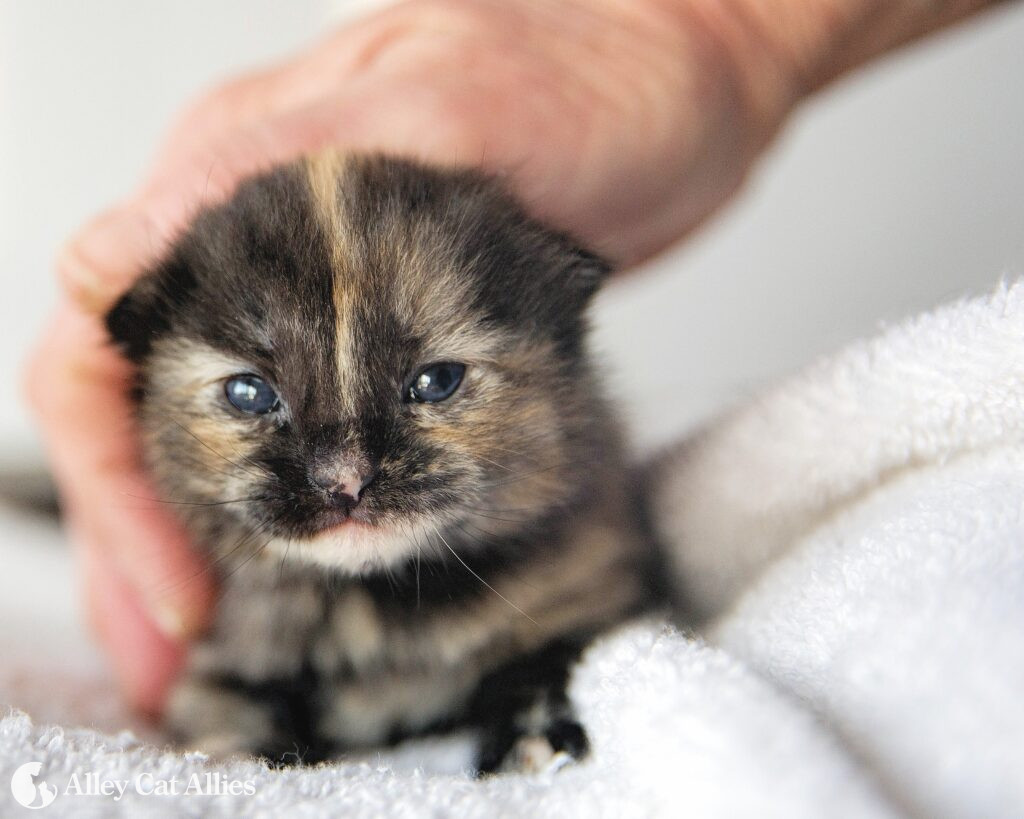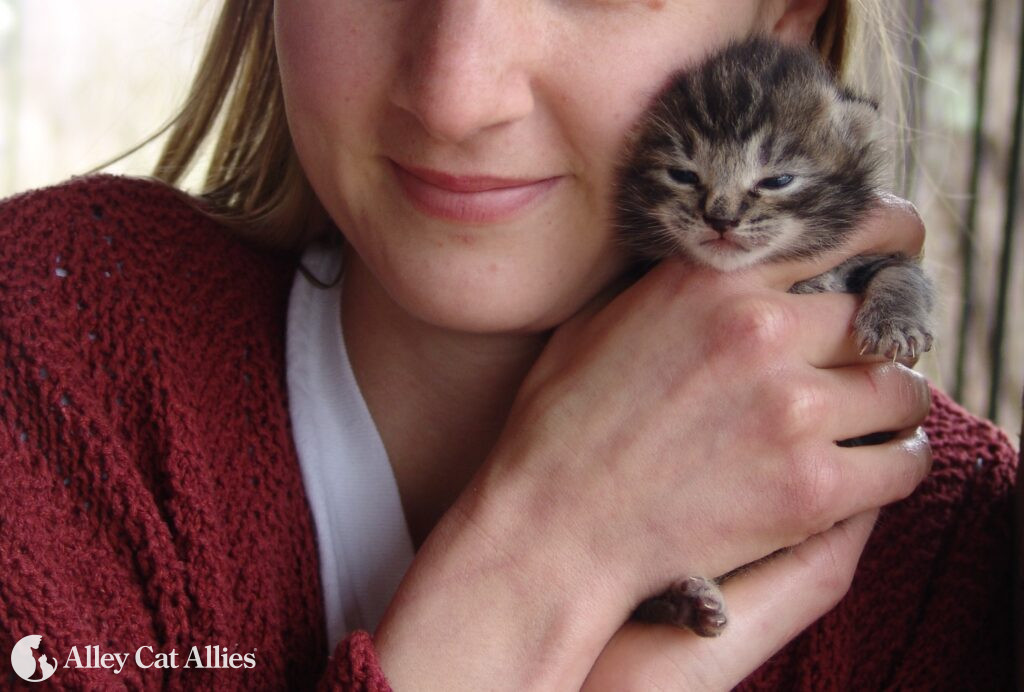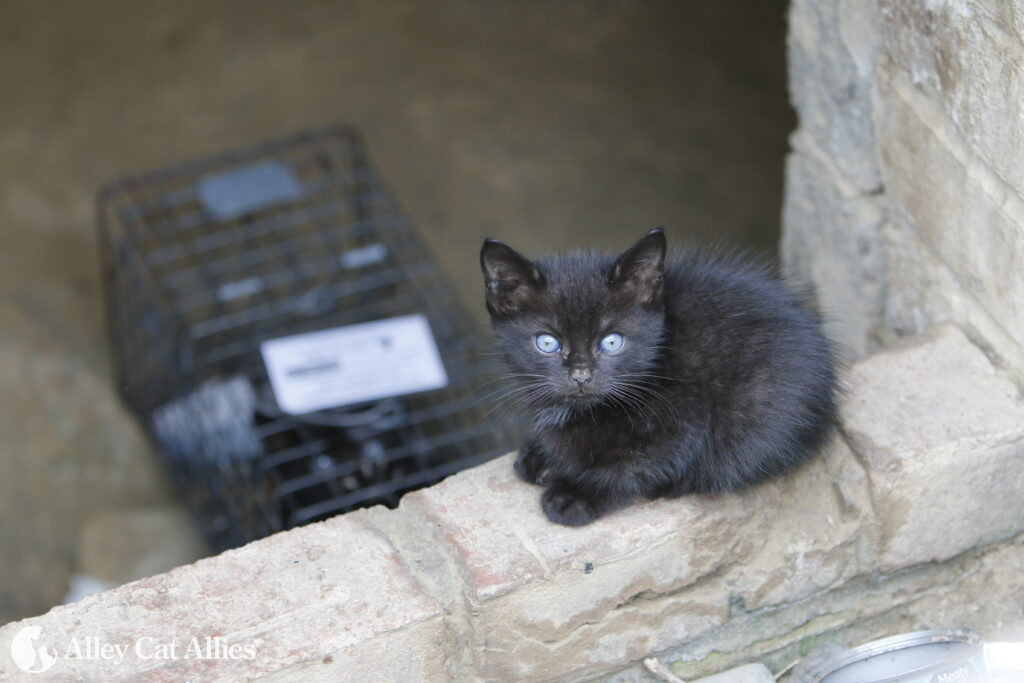April showers are about to bring May flowers—and kittens! When the weather warms up, most kittens are born. That is why the spring and summer months are known as kitten season!
Compassionate people will always feel the pull to protect kittens they see outdoors. However, they don’t always know the best ways to help.
Alley Cat Allies has the information and resources you need to become a kitten hero this spring! These are our top tips:
1. Don’t separate kittens from their mother
Humans can’t replace the special, instinctive care mother cats give their kittens to help them grow up strong and healthy. And we can’t replace a mother cat in teaching her babies how to, well, be a cat! There is no need to remove kittens if their mother is present, regularly caring for them, and the little family is not sick or injured.
Please know that even if you haven’t seen mom for a couple of hours, it does NOT mean she isn’t caring for her kittens. Mother cats will often leave for stretches of time to find food—and she will return. If you are concerned, watch the kittens from afar over a course of several hours. You can also try spreading a bit of flour or baby powder around where the kittens are to see if you can spot mom’s footprints coming and going.
If you’re really eager to help mom raise her kittens, you can lend a hand by providing her a comfortable and safe outdoor shelter, as well as regular food and water!
2: Don’t bring young kittens to the shelter
Many shelters simply do not have the policies, programs, and resources to provide the round-the-clock care neonatal kittens (kittens younger than 4 weeks old) need. As a result, these kittens are often killed.
As a general rule, the more cats we can keep out of shelters through foster networking, spay and neuter, and caring for the cats in their outdoor homes—the better.
3. Learn how to care for kittens who DO need you
If you’ve carefully watched and waited and the kittens’ mother doesn’t return—or you know for certain that she is gone for other reasons—make sure you’re prepared to care for them! Anyone can be a kitten caretaker with the right tools and know-how.
Keep in mind that neonatal kittens require round-the-clock care with different needs depending on their age. At this vulnerable age, they cannot feed themselves or even go to the bathroom on their own! Replacing mom is no small job, but it’s worth it every step of the way.
Alley Cat Allies has neonatal kitten care information available on our website.
Our Kitten Care Kits have the gear you need to raise kittens up healthy and strong.
How do you know if a kitten needs immediate care or if Trap-Neuter-Return (TNR) is the best option? That all depends on her age! Our How Old Is That Kitten? Guide will help you find out.
4. Use your kitten care knowledge to volunteer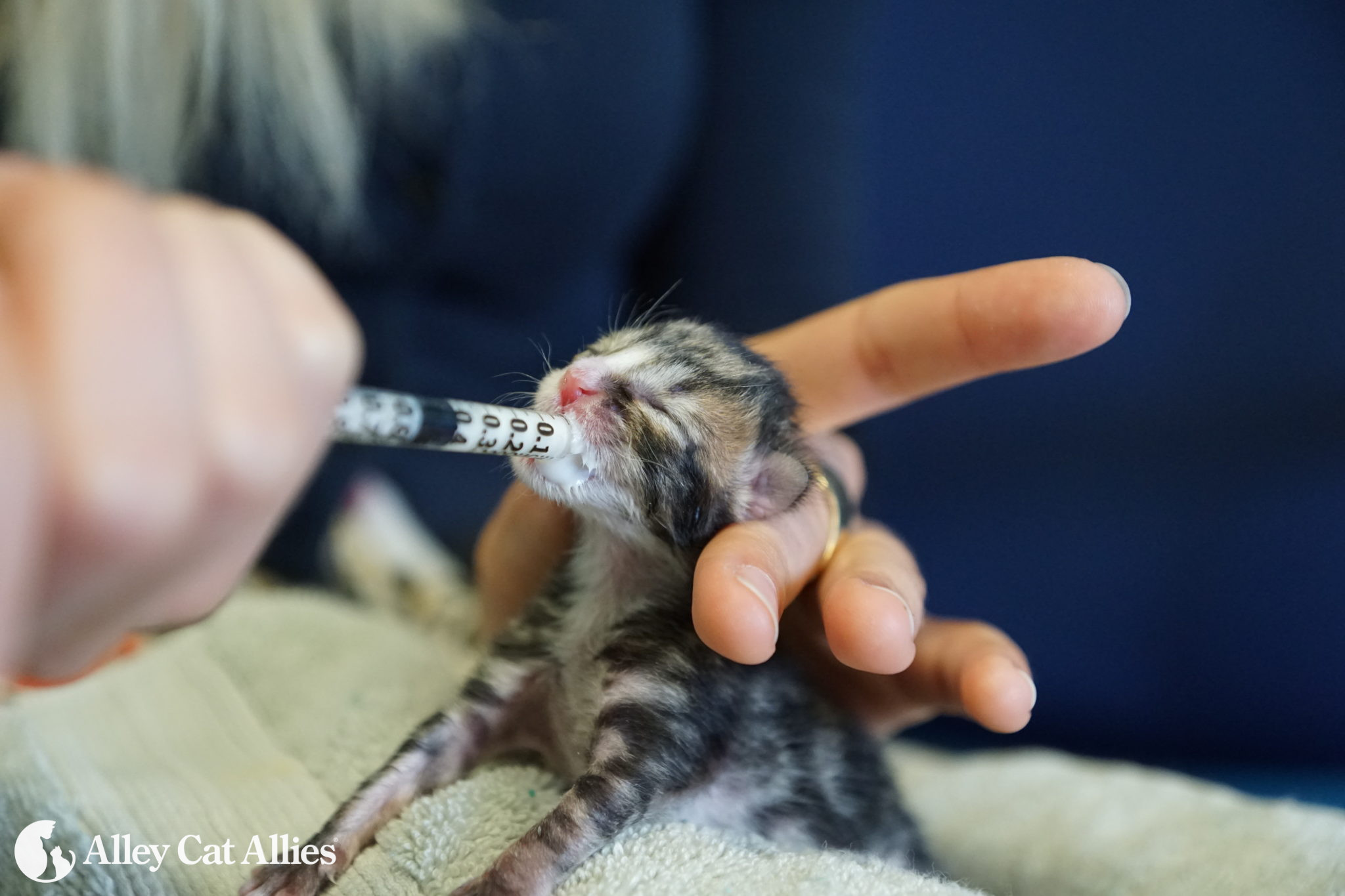
Shelters and rescue groups across the country and around the world are always on the lookout for ready and willing bottle baby kitten foster caregivers. You can be that critical resource! If you don’t have experience, train yourself with our information above or pursue training on neonatal kitten care.
We have a webinar that will walk you through the basics of kitten care here.
And once you’ve become a powerhouse kitten foster caregiver, encourage and empower your friends and neighbors to do the same!
5. Do Trap-Neuter-Return (TNR)
TNR is the only effective and humane approach to stabilizing community cat populations—and it is more critical than ever in and around kitten season! In a TNR program, community cats are humanely trapped and brought to a veterinarian to be spayed or neutered, vaccinated, and eartipped (the universal symbol that a cat has been neutered and vaccinated) before being returned to their outdoor homes. Learn more about TNR.
Cats as young as four months can have kittens, so it is important to spay and neuter kittens as soon as they are ready. A good rule of thumb is the 2 Months, 2 Pounds: Time 2 Spay and Neuter Rule. Kittens can be safely spayed or neutered at two months of age or as soon as they weigh two pounds.
6. Advocate for programs that protect kittens
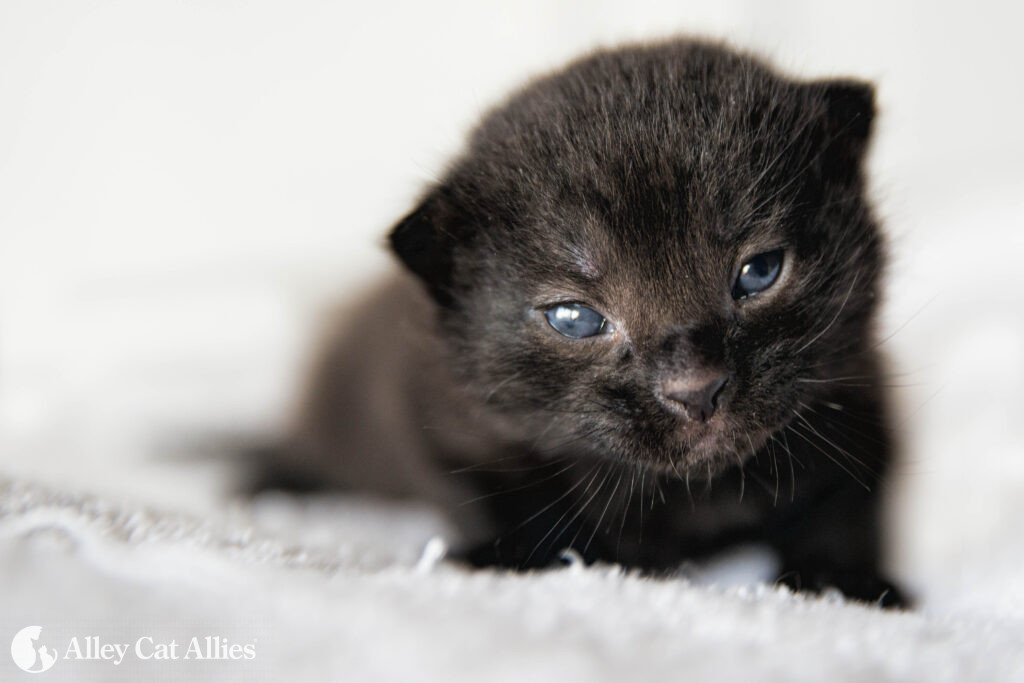
Danbury Kittens
Two weeks old, ten days old, kitten, standing, cloth, neonatal
Kittens are 10 days old, they do not yet have names
Contact your shelter and local officials and tell them you support lifesaving policies for cats, Trap-Neuter-Return, and Shelter-Neuter-Return (A TNR program in which cats are brought to the shelter for spay and neuter and are then returned to their outdoor homes).
Encourage your local shelter to adopt a Wait Until 8® program! This unique, vital program involves shelter staff encouraging community members who bring in young kittens to care for those kittens themselves. The shelter would provide training, resources, and kitten care kits to facilitate that fostering.
Then, when the kitten is 2 months old and at least 2 pounds, the community member could bring the kitten back in to be spayed or neutered and adopted!
Learn how you can help your local shelter save more cats’ and kittens’ lives.
Visit www.alleycat.org/Kittens for a comprehensive guide to caring for kittens.



